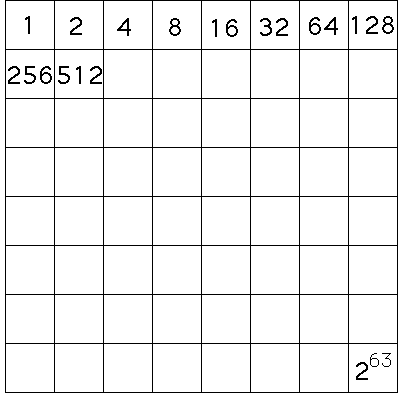
According to George Gamow, chess was invented by Sissa ben Dahir, Wazir of the court of King Shiram. King Shiram loved the game so much that he offered Sissa any reward he could name. Perhaps trying to impress the king with his mathematical skills, Sissa asked for some rice,
How much rice did Shiram owe Sissa?
 |
The last square would contain 263 grains of rice. This is a large number:
263 = 9,223,372,036,854,775,808
Suppose Shiram had tried to stack the rice of this last square in a column, each grain lying on top of the one below it. A grain of rice is about 1 mm thick. How high a column of rice would Shiram have obtained?
Here is the answer.
The quickness of doubling is not just related to the history of chess. The most elementary population models postulate the growth rate is proportional to the population size (twice as many people means twice as many couples having babies, means twice as many babies). This led Thomas Malthus to predict population pressure problems, because Malthus argued populations grow more rapidly than their ability to produce food.
So we come to the next simplest model: a population growing in an environment with limited resources. One such model is the logistic map.
Return to Deterministic Chaos.